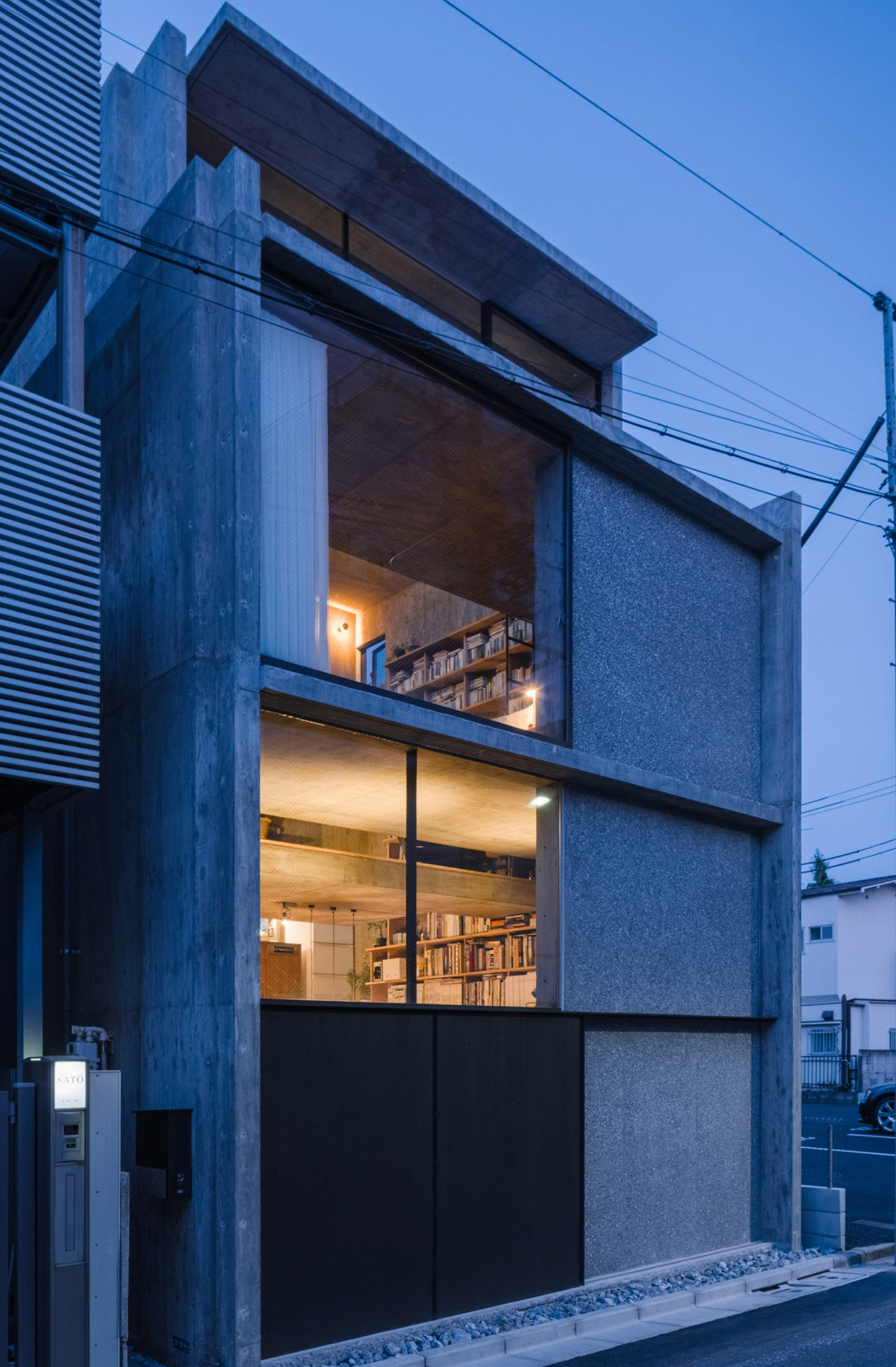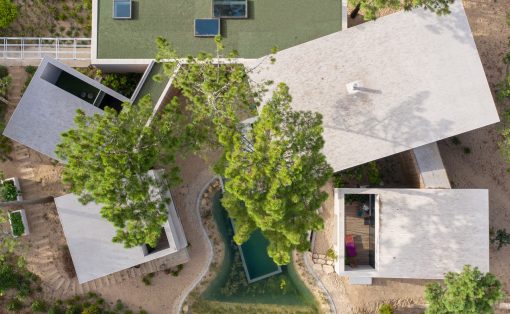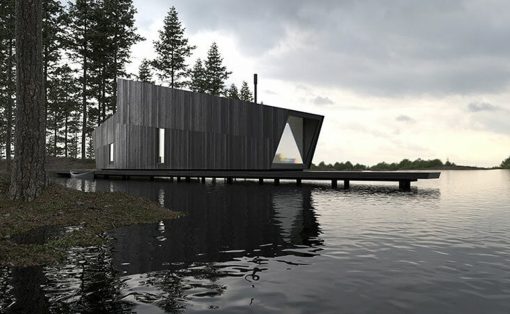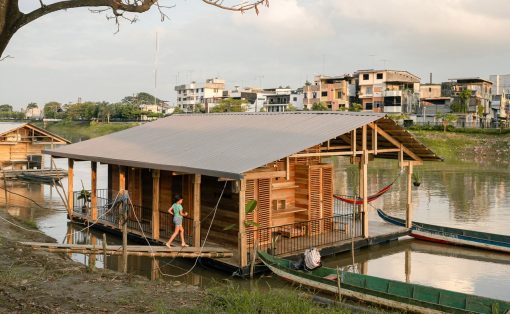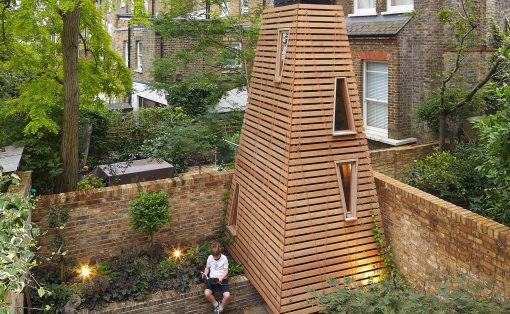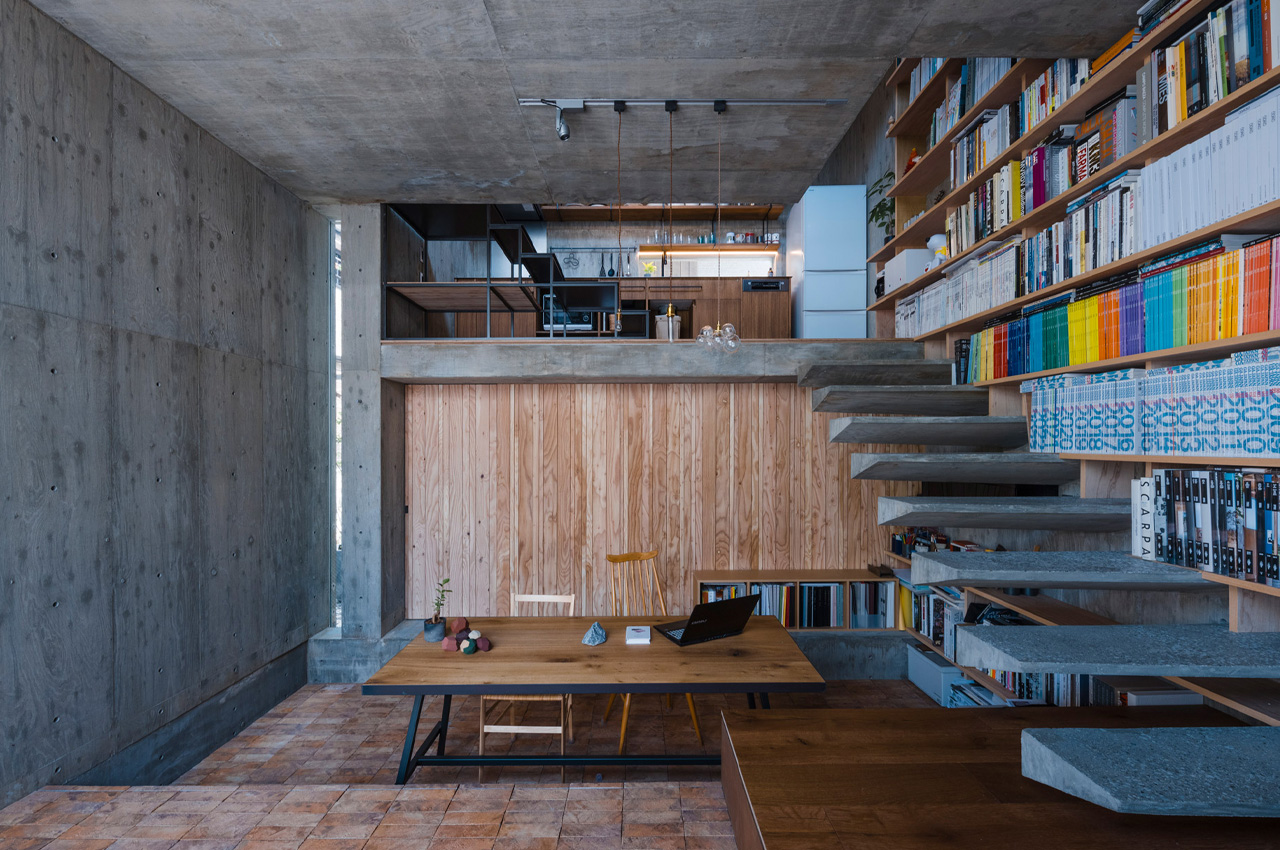
Dubbed the Building Frame of the House, this home in Tokyo is a unique adaptable space for both living and working. It features stepped living areas framed by boardmarked concrete walls. It is designed by IGArchitects to function as “one big room”.
“[The clients] have a vague boundary between their private and work life, they were imagining a house where they can work anywhere and where they can sense the presence of each other wherever in the house,” said founder Masato Igarashi. “With such lifestyle, rather than have small spaces for compact living, the house was designed to have a large volume and scale that makes various interactions between inside and outside space,” he added.
Designer: IGArchitects
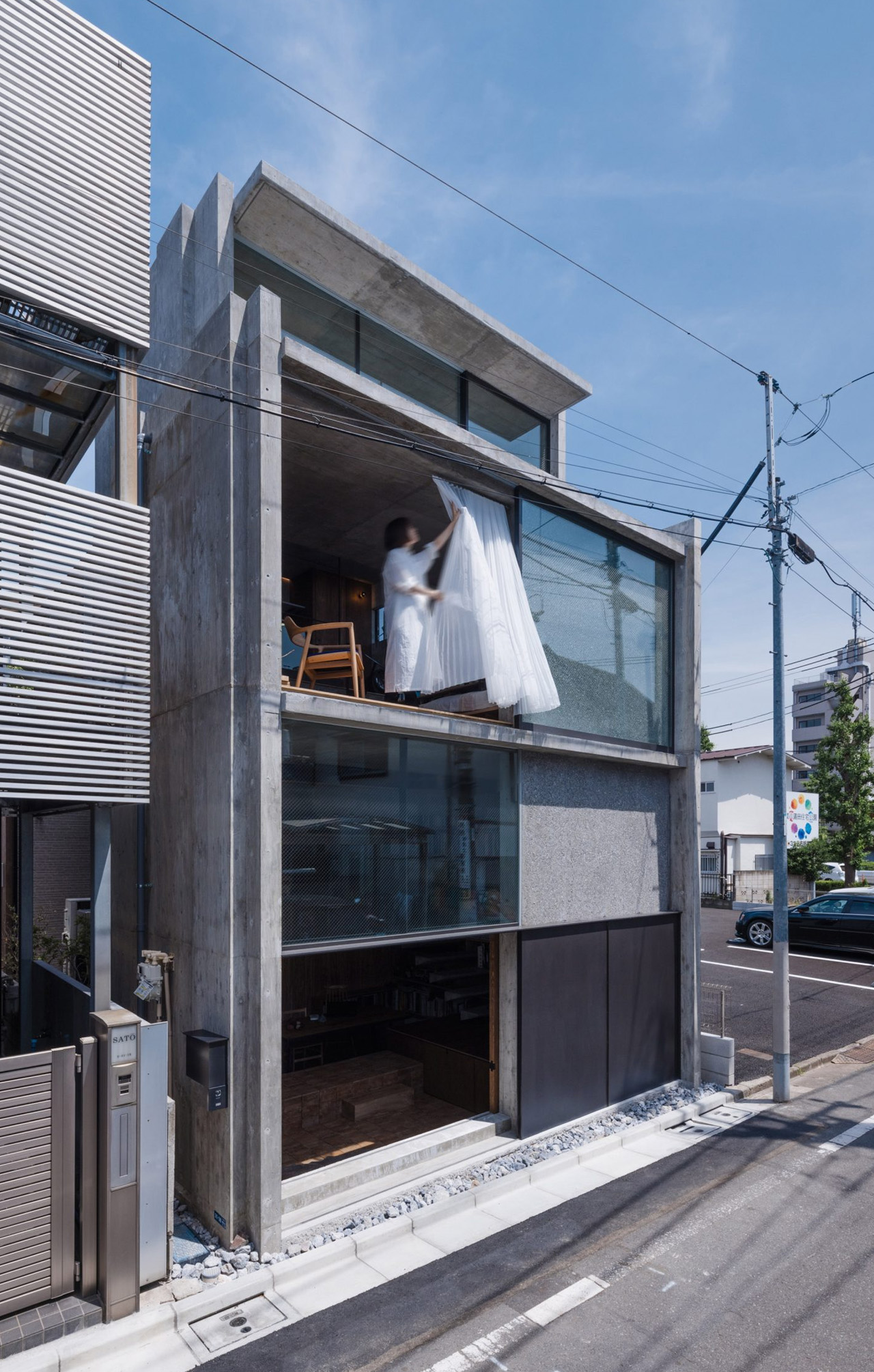
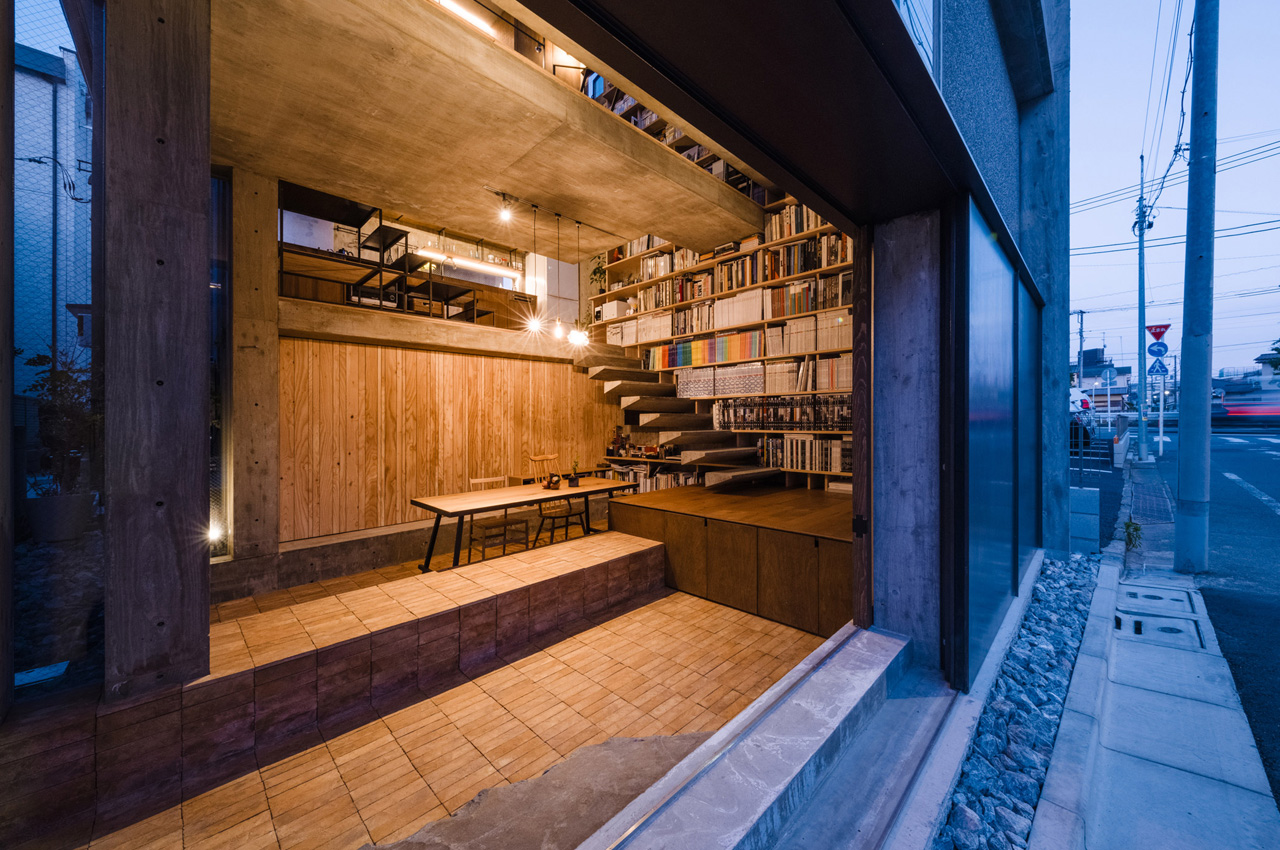
The home’s central space is designed to be as open as possible, with the studio organizing the home’s floors as irregularly stepped mezzanine layers. The various floors are connected via a black-metal staircase and a ladder. At the rear of the home, there is a ground-floor kitchen and first-floor bathroom. The bedrooms and the living spaces are located at the front. A massive bookcase is nestled against the southern wall.
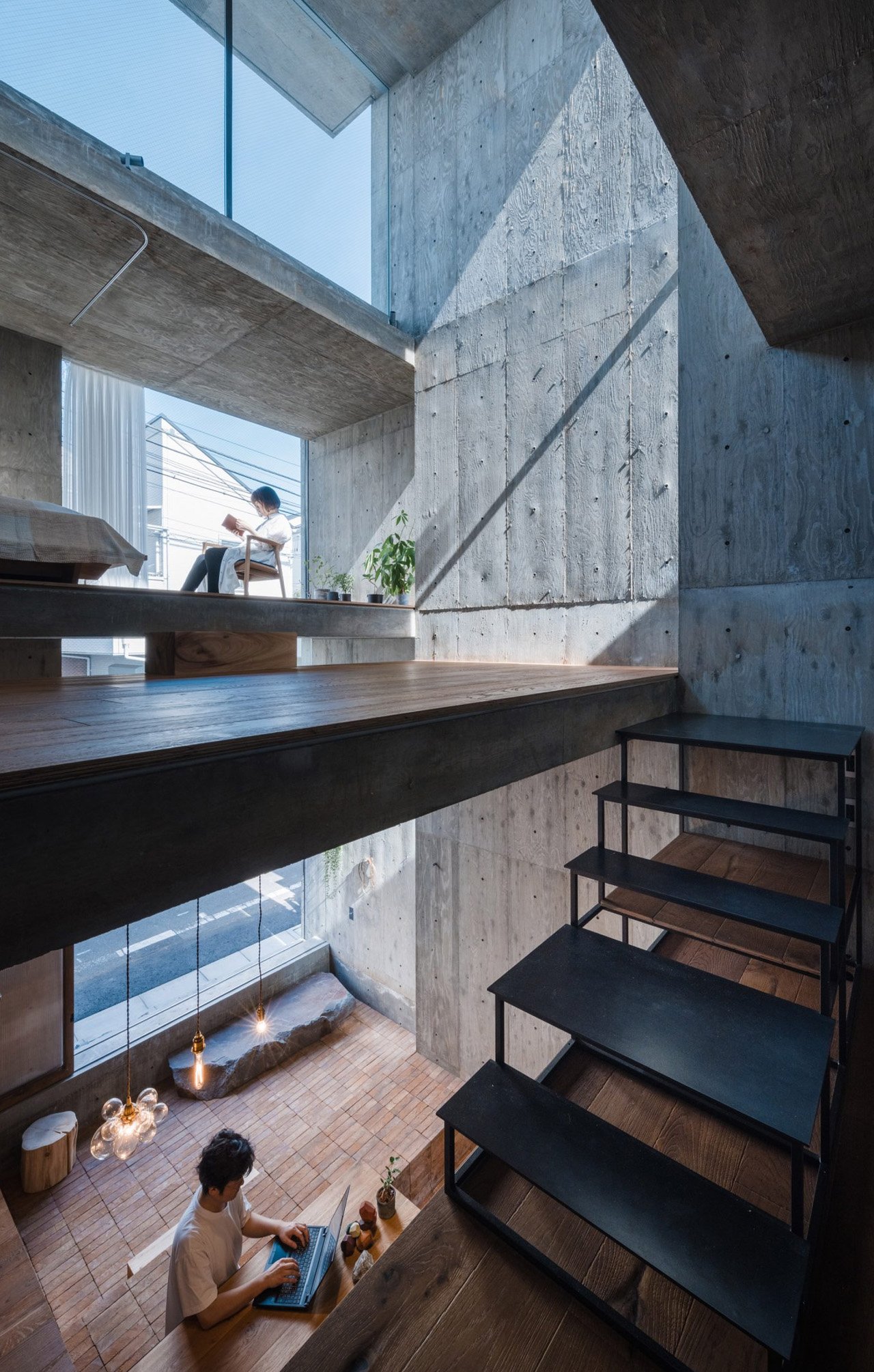
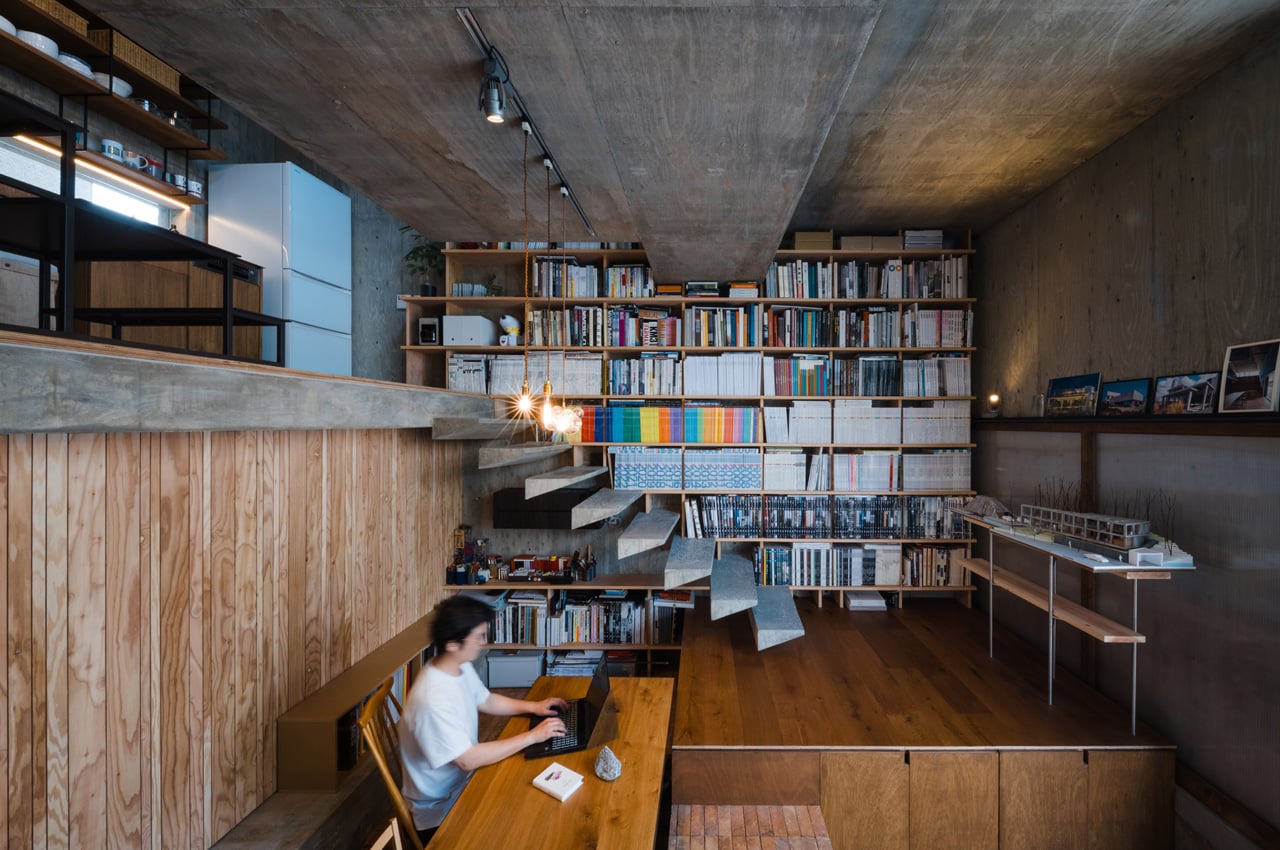
The side walls of the home have been left quite blank, with sections of full-height glazing located at the front of the home, which offer a generous amount of natural light. “The floors are divided to make it difficult to see the interior from the outside, which is treated like a wall,” said Igarashi. “The way the space is used overlaps, responding to the residents’ lifestyle,” he continued. “The floors can turn into a seat, table, shelf, ceiling, or bed.”
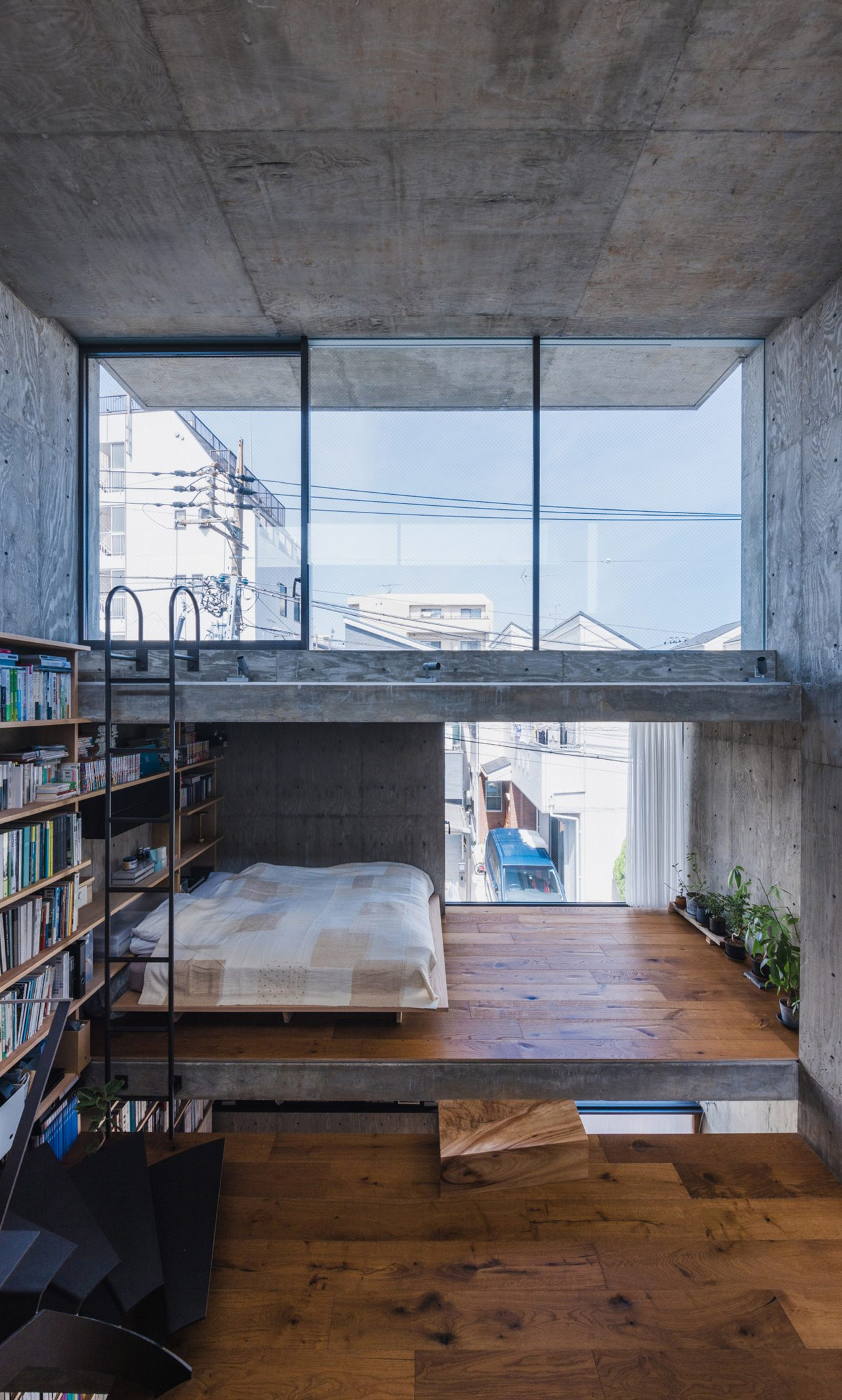
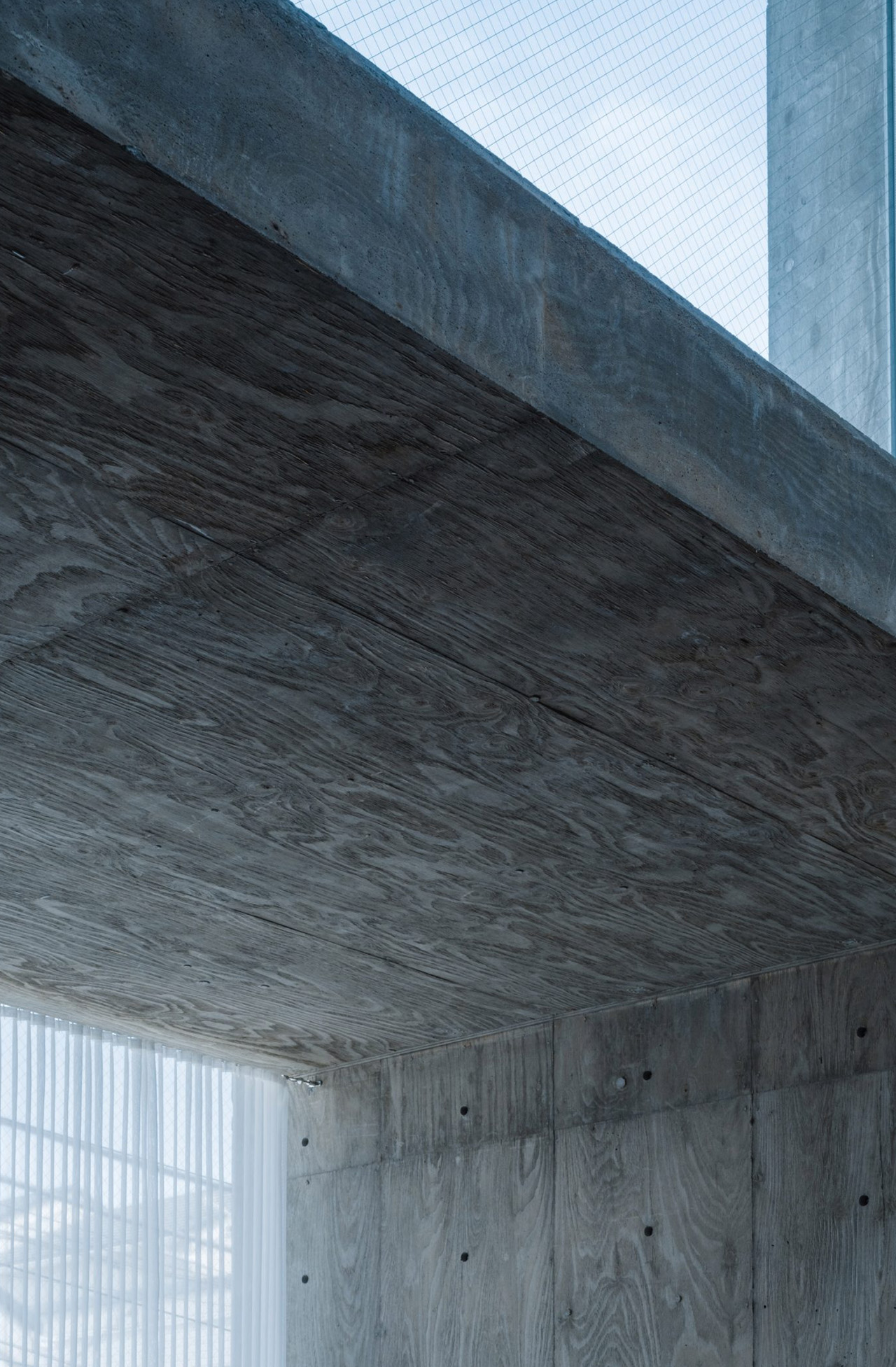
The boardmarked concrete structures within the home are exposed, which are teamed up with wooden floors and shelving, and metal countertops in the kitchen, creating an interesting contrast. “We selected materials that would develop their own flavor as they age, and we wanted to bring out the texture and strength of the materials and their shades in the space,” said Igarashi. “Since the site is too small to create a garden, the interior and exterior are treated equally, and the materials are unified inside and out.”
